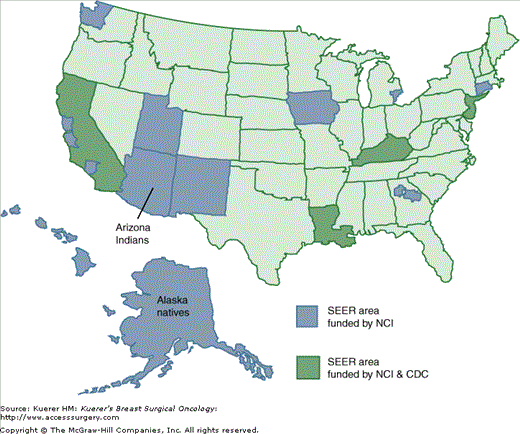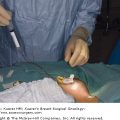After years of lobbying by women’s health advocates and amidst much fanfare, the 1998 Federal Breast Cancer Reconstruction Law (also referred to as the Women’s Health and Cancer Rights Act of 1998, or WHCRA) was signed into law by President Bill Clinton.1 Passage of this legislation marked the culmination of intensive lobbying efforts by breast cancer survivors, clinicians, researchers, and policymakers to ensure coverage of breast reconstruction following mastectomy by health care payers. In the 2 decades prior to the passage of the WHCRA, a growing body of research demonstrated significant psychosocial and quality-of-life benefits for those receiving breast reconstruction.2-4 Largely as a consequence of these studies, provider and patient perceptions evolved away from viewing breast reconstruction as a “cosmetic” procedure. Instead, health care professionals and consumers concluded that the creation of a new breast following mastectomy was a reconstructive operation and, for many women, an important element in breast cancer recovery. Despite changing attitudes, some health care payers had failed to include breast reconstruction among their covered benefits, steadfastly maintaining that these operations were cosmetic in nature. With enactment of the WHCRA, this barrier was removed. The law mandated that health plans include breast and nipple reconstruction as well as contralateral breast symmetry procedures among their benefits afforded to mastectomy patients.
The WHCRA was a significant milestone in several respects. It was a tangible sign that breast cancer had become a prominent issue in health care policy and that breast cancer advocacy had evolved into a potent lobbying force on the national political scene. The new law also signaled that breast reconstruction had become widely recognized as an important element in breast cancer treatment and rehabilitation. Finally, the WHCRA demonstrated the power of consumers to impact health care policy on a national level.
Measuring the current rate of breast reconstruction may seem like a straightforward proposition. In fact, determining recent rates of postmastectomy reconstruction in the United States presents a daunting challenge, largely due to the fragmented nature of clinical databases in this country. While many other developed countries have nationalized health care systems with comprehensive patient databases, the US system, with its hodgepodge of public and private payers, does not currently possess a single data clearinghouse for the entire patient population. Researchers seeking to evaluate national trends for health care utilization are forced to rely on databases that include only segments of the treatment population. Thus, the generalizability of the results of these studies is severely limited. For example, the Medicare database contains a nationwide sample of patients, but is largely restricted to those over 65 years of age. Since breast reconstruction is relatively uncommon in the elderly, using Medicare data to study reconstruction rates for the general population would not be appropriate. Medicaid databases are similarly flawed, as they are mainly limited to patients within a narrow socioeconomic spectrum.
Our best estimates for the utilization of breast reconstruction have been obtained through analyses of the Surveillance, Epidemiology and End Results (SEER) database, which was created by the National Cancer Institute.5 The SEER program is currently the most comprehensive source for national cancer incidence and outcome data in the United States. Although the program covers only 26.2% of the US population,6 the 18 regional registries that contribute data provide a fairly representative sample of the nation as a whole (Fig. 73-1). Inclusion of diverse socioeconomic, geographic, ethnic, and age groups greatly enhances the generalizability of the sample to the general US population.7
To date, most published studies on breast reconstruction utilization have relied upon the SEER program. While the SEER database mainly includes patient-specific information on breast cancer staging, treatment, and outcomes, the registry also records basic details on mastectomy reconstruction. The database tracks reconstructions performed at the time of mastectomy (immediate procedures) or within 4 months following mastectomy (early delayed procedures).5 Delayed reconstructions carried out later than 4 months after mastectomy are not recorded, a deficiency that constitutes the database’s greatest limitation in analyzing breast reconstruction rates. However, information identifying the types of reconstruction performed (eg, implant versus autogenous tissue) is included.
Two published reports have used the SEER program to analyze rates of breast reconstruction. The first study, published in 2000 by Polednak, analyzed SEER data from 1988 through 1995. and demonstrated overall rates for mastectomy patients receiving reconstruction to rise from 4.3% in 1988 to 10.8% in 1995. Polednak also examined regional and socioeconomic variations in these rates. Geographic region was a statistically significant predictor for breast reconstruction in all age categories. Over the entire study period, the registry with the largest proportion of women undergoing reconstruction was Atlanta (16.0%), while the lowest was Hawaii (3.3%). Income level also had a significant effect on reconstruction rates, with the 2 lowest income quintiles having less likelihood of receiving reconstruction.
In a more recent study (2003), our group evaluated patients from the 1998 SEER database.9 Within the immediate to early delayed period, the overall reconstruction rate for the 10,406 women with mastectomy was 15.4%. Among all reconstructions, 41.8% used autogenous tissue (muscle flaps), 24.0% were tissue expander/implant, and 11.5% utilized combined flap/implant procedures. Several sociodemographic variables were found to be significantly associated with the use of breast reconstruction (Table 73-1). Compared with women ages 45 to 54 years, those 35 to 44 years were significantly more likely to receive reconstruction (odds ratio [OR] = 1.52, p < 0.001). Those 55 to 64, 65 to 74, and 75 years and older were significantly less likely to undergo reconstruction (OR = 0.42, p < 0.001; OR = 0.16, p < 0.001; and OR = 0.29, p < 0.001, respectively). In addition to patient age, ethnicity also had a significant effect on the likelihood of postmastectomy reconstruction in the SEER population. Compared with Caucasian women, African American, Hispanic, and Asian-American women were significantly less likely to receive breast reconstruction (OR = 0.48, p < 0.001; OR = 0.45, p < 0.001; and OR = 0.29, p < 0.001, respectively).9
| Independent Variables | Adjusted ORb | 95% CI | p Value |
|---|---|---|---|
| Age (years) | |||
| < 35 | 1.24 | 0.86, 1.79 | 0.246 |
| 35-44 | 1.52 | 1.28, 1.80 | < 0.001 |
| 45-54d | — | — | |
| 55-64 | 0.42 | 0.35, 0.49 | < 0.001 |
| 65-74 | 0.16 | 0.13, 0.19 | < 0.001 |
| > 75 | 0.04 | 0.03, 0.06 | < 0.001 |
| Race | |||
| African American | 0.51 | 0.40, 0.65 | < 0.001 |
| Hispanic | 0.47 | 0.36, 0.62 | < 0.001 |
| Asian/other | 0.30 | 0.23, 0.40 | < 0.001 |
| Caucasiand | — | — | |
| Marital statusc | 0.91 | 0.80, 1.04 | 0.18 |
| Registry | |||
| San Franciscod | — | — | |
| Connecticut | 0.37 | 0.28, 0.51 | < 0.001 |
| Metro Detroit | 1.36 | 1.08, 1.71 | 0.009 |
| Hawaii | 0.56 | 0.34, 0.91 | 0.020 |
| Iowa | 0.47 | 0.36, 0.62 | < 0.001 |
| New Mexico | 0.76 | 0.53, 1.09 | 0.134 |
| Seattle (Puget Sound) | 0.57 | 0.43, 0.77 | < 0.001 |
| Utah | 0.75 | 0.54, 1.04 | 0.087 |
| Metro Atlanta | 2.49 | 1.90, 3.27 | < 0.001 |
| San Jose-Monterey | 1.05 | 0.80, 1.39 | 0.713 |
| Los Angeles | 0.84 | 0.66, 1.05 | 0.125 |
| Stage of disease | |||
| In situ | 2.44 | 2.03, 2.94 | < 0.001 |
| Stage I | 1.25 | 1.07, 1.45 | 0.005 |
| Stage IId | — | — | |
| Stage III | 0.63 | 0.49, 0.83 | 0.001 |
| Stage IV | 0.61 | 0.37, 1.01 | 0.056 |
| Adjuvant radiotherapye | 0.71 | 0.58, 0.86 | 0.001 |
Our analysis also found large regional variation in rates of postmastectomy breast reconstruction (Table 73-2).9 While the Atlanta registry reported the highest rate (33.6%), Hawaii recorded the lowest (7.6%). Thus, the proportion of mastectomy patients receiving reconstruction showed a 4-fold variation among the regions. Controlling for potential confounding variables (patient age, race, disease stage, marital status, and use of adjuvant radiotherapy), regression analysis found that 6 of 10 regions had significantly different rates of reconstruction compared with the reference rate (San Francisco) (Table 73-1). Choice of procedure type also showed considerable regional variation; for example, 83.2% of reconstructions in Atlanta used autogenous tissue, compared with 53.5% in San Jose-Monterey and 53.5% in Iowa (Table 73-2).
| SEER Registry | Immediate & Early Delayed Reconstruction (%)a | Autogenous Tissue Reconstruction (%) | Total |
|---|---|---|---|
| Metro Atlanta | 33.6 | 82.3 | 643 |
| Metro Detroit | 22.9 | 69.9 | 1332 |
| San Jose-Monterey | 17.2 | 53.5 | 727 |
| Utah | 17.1 | 73.7 | 461 |
| San Francisco | 16.7 | 69.5 | 1226 |
| New Mexico | 14.4 | 65.4 | 446 |
| Los Angeles | 13.6 | 65.0 | 2024 |
| Seattle (Puget Sound) | 11.6 | 83.6 | 907 |
| Connecticut | 9.2 | 70.5 | 963 |
| Iowa | 8.8 | 53.7 | 1310 |
| Hawaii | 7.6 | 66.7 | 367 |
Evidence of low utilization of breast reconstruction also was reported by Polednak in a statewide study using the Connecticut Office of Health Care Access and Connecticut Tumor Registry databases.10 In this study Polednak analyzed reconstruction rates for mastectomy patients diagnosed between 1992 and 1996 and reported an overall rate of 12.5% for the entire study period, ranging from 8.8% in 1992 to 15.6% in 1996. As in his earlier SEER study, he also found that economic status was a significant predictor of reconstruction. In 2 of 3 age categories analyzed, low-income patients were significantly less likely to receive reconstruction.
Based on a review of the SEER data described in the preceding section, it appears that breast reconstruction experienced slow but steady growth in the United States from 1988 through 1998. This trend likely reflected increasing awareness and acceptance of postmastectomy reconstruction by patients, providers, and payers. With passage of the WHCRA in 1998, it would seem reasonable to expect that the trend would continue or even accelerate, due in part to the law’s removal of financial barriers to reconstruction for many women.
While determining current trends for breast reconstruction with complete accuracy remains elusive, it is possible to draw some conclusions based on available, but (as we discussed earlier) imperfect databases. To date, the SEER program provides reconstruction data up to the end of the year 2000. Overall reconstruction rates for the 11 registries were 16.8% for 1999 and 18.0% for 2000. The distribution of procedure types also showed minor changes compared with 1998: for 1999, 55.7% of patients received autogenous tissue reconstructions, 27.0% underwent expander/implant techniques, and 17.3% had combined flap/implant procedures. In the year 2000, the rates were 54.9%, 29.3%, and 15.7%, respectively.
The American Society of Plastic Surgeons also provides data on trends in breast reconstruction.11 Information is self-reported by plastic surgeons across the country. Although these statistics may be subject to sampling error, the ASPS database still represents one of the more comprehensive and up-to-date sources of information on reconstructive procedures. According to these data, a large increase in the number of breast reconstructions occurred between 1992 and 1998 (from 29,607 to 69,683 cases). Between 1998 and 2001, there was an additional rise in case volume to 81,089. However, for 2002, the total declined to 73,026.
Stay updated, free articles. Join our Telegram channel

Full access? Get Clinical Tree








